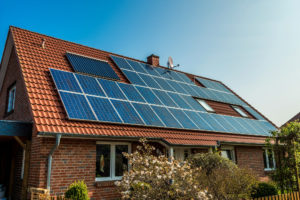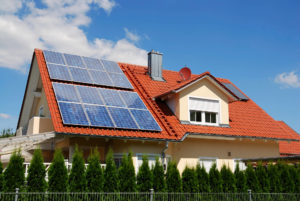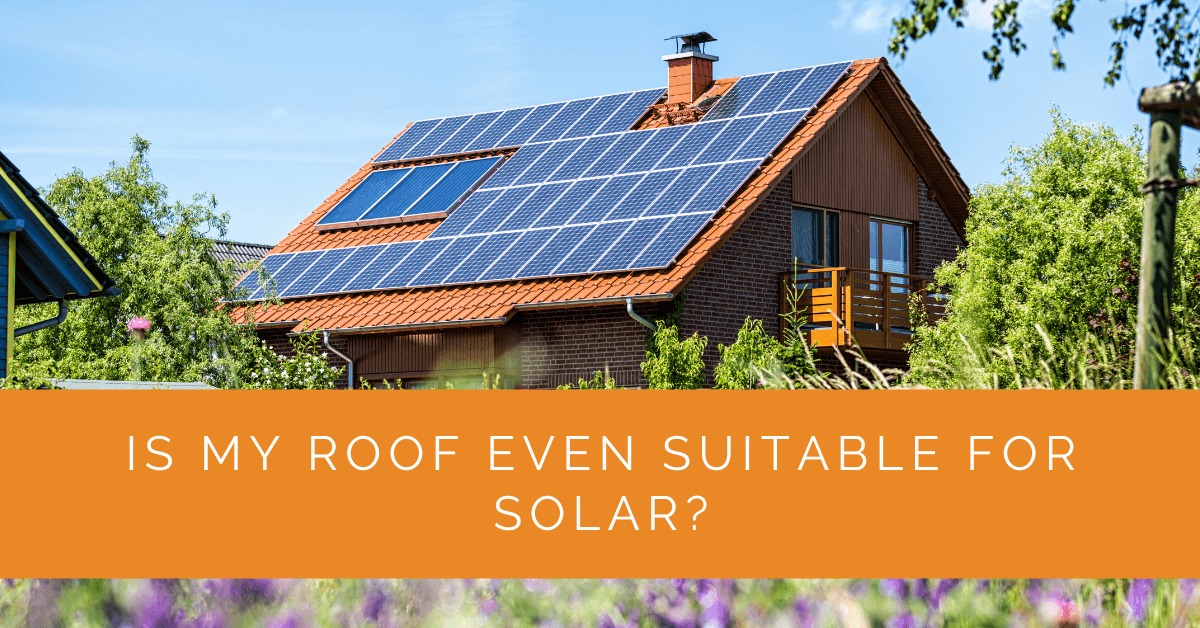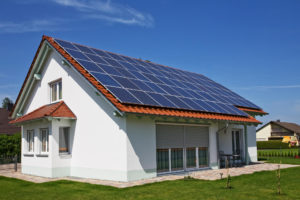Installing solar panels on your roof can be an excellent way to harness solar energy and reduce your carbon footprint. However, not all roofs are equally suitable for solar installations. Before diving into the solar world, assessing whether your roof is a good candidate for solar panels is crucial. This article will guide you through evaluating your roof’s suitability, considering factors such as roof type, material, orientation, and more.
Contents
- 1 Key Takeaways
- 2 Assessing Your Roof’s Potential for Solar
- 3 Best Roof Types for Solar Panels
- 4 Roof Inspections and Preparations
- 5
- 6 Maximizing Solar Potential with Roof Modifications
- 7 Factors to Consider for Rooftop Solar in Different Climates
- 8 Roof Warranty and Insurance Considerations
- 9 Financial Considerations for Roof-Mounted Solar
- 10 Case Study: Evaluating Roof Suitability for Solar Panels
- 11 Expert Insights From Our Solar Panel Installers About Roof Suitability for Solar Panels
- 12 Experience Solar Excellence with Us!
- 13 Conclusion
Key Takeaways
- Assess key factors such as roof orientation, pitch, shading, and structural integrity to determine if your roof is suitable for solar panels.
- Roofs with favorable characteristics, such as south-facing orientation, optimal pitch, and minimal shading, are generally better candidates for solar installations.
- Consult with qualified solar installers, conduct professional roof inspections, and consider factors like roof material, climate, and financial aspects to make an informed decision about going solar.
Assessing Your Roof’s Potential for Solar
Before proceeding with a solar panel installation, it’s essential to assess your roof’s potential for solar thoroughly. By carefully considering various factors, you can determine if your roof is suitable for maximizing the benefits of solar energy.
Evaluating Roof Orientation and Sun Exposure
Roof orientation and sun exposure are key factors in determining your roof’s solar potential. South-facing roofs generally receive the most sunlight throughout the day, making them ideal for solar installations. However, east- and west-facing roofs can still be viable options, as they generate significant solar energy.
Analyzing Roof Pitch and Angle
Roof pitch and angle play a crucial role in optimizing solar panel performance. Roofs with 15 to 40 degrees pitches are typically ideal for solar installations. This range allows for optimal sunlight absorption and self-cleaning through rainwater runoff. However, roofs with different pitches can also be suitable, as long as they receive adequate sunlight and the panels can be properly mounted and adjusted for maximum efficiency.
Considering Shading and Obstructions
Shading from trees, nearby buildings, or other obstructions can significantly impact your roof’s solar potential. Assess the presence and duration of shading throughout the day, especially during peak sunlight hours. Minimizing shading is important for maximizing energy production and ensuring the effectiveness of your solar panel system. Tree trimming or finding alternative mounting locations can help mitigate shading concerns.
Evaluating Roof Age and Structural Integrity
Your roof’s age and structural integrity are important considerations before installing solar panels. If your roof is nearing the end of its lifespan or has existing structural issues, it may be necessary to address these concerns before proceeding with the installation. A solid and well-maintained roof ensures the longevity and safety of your solar panel system.
Exploring Roof Material and Durability
Different roof materials have varying levels of compatibility and ease of installation for solar panels. Asphalt shingle roofs are the most common and generally suitable for solar installations. They provide a smooth surface and ease of installation. However, tile roofs, such as clay or concrete tiles, and metal roofs, including standing seam roofs, can also be good candidates with the right installation techniques. Understanding the compatibility of your roof material with solar panels is essential for a successful solar installation.

Best Roof Types for Solar Panels
Certain roof types are particularly well-suited for solar panel installations. Let’s explore some of the best options and their advantages.
Asphalt Shingle Roofs
Asphalt shingle roofs are widely used in residential settings and offer excellent compatibility with solar panels. Their affordability, ease of installation, and versatility make them popular among homeowners. Additionally, asphalt shingle roofs provide good solar potential for most homes and accommodate various solar panel configurations.
Tile Roofs
Tile roofs, such as clay or concrete tiles, have a distinctive aesthetic appeal and can be suitable for solar panel installations. With proper installation techniques, tiles can serve as a durable and reliable foundation for solar panels. It’s important to work with experienced solar installers familiar with tile roofs to ensure proper mounting and roof integrity.
Metal Roofs
Metal roofs, including standing seam roofs, are known for their durability and longevity. They offer an ideal surface for solar panels, providing a secure and long-lasting foundation for the system. Metal roofs are compatible with various solar mounting systems, making installation more straightforward. Additionally, their reflective properties can enhance energy efficiency by reducing heat absorption.
Roof Inspections and Preparations
Conducting a professional roof inspection is crucial in preparing for a solar panel installation. A qualified roofing professional can assess the condition of your roof and identify any existing issues that need to be addressed.
Addressing Existing Roof Issues
If your roof has any pre-existing issues, such as leaks, damaged shingles, or structural deficiencies, it’s important to address them before installing solar panels. Repairing or replacing damaged roofing materials ensures a solid and secure foundation for your solar panel system. It’s recommended to consult with both a roofing professional and a solar installer to coordinate the necessary repairs and ensure the long-term viability of your solar installation.
Reinforcing the Roof Structure
In some cases, it may be necessary to reinforce the roof structure to accommodate the additional weight of solar panels. This is particularly relevant for older roofs or roofs with weaker support structures. A structural engineer or roofing professional can evaluate your roof’s load-bearing capacity and recommend any necessary reinforcements to ensure the stability and safety of your solar panel system.
Maximizing Solar Potential with Roof Modifications
Certain modifications may be required to optimize your roof’s solar potential. These modifications can help improve energy production and panel efficiency.
Roof-Mounted Solar Panel Systems
Roof-mounted solar panel systems are the most common type of installation. They involve mounting the panels directly onto the roof surface using racks or mounting systems. Tilted or adjustable mounts can be utilized to optimize sun exposure and maximize energy production. Consulting with a qualified solar installer can help determine the best mounting options for your roof and location.
Exploring Additional Roof Modifications
In some cases, additional roof modifications may be considered to maximize solar potential. These modifications can include adding skylights or dormers to increase available roof space for solar panels. However, evaluating the structural feasibility and potential impact on energy production is important before proceeding with such modifications.
Factors to Consider for Rooftop Solar in Different Climates
Different climates present unique challenges and considerations for rooftop solar installations. Understanding these factors is crucial to ensure your solar panel system’s optimal performance and longevity.
Solar Considerations for Hot and Sunny Climates
Solar panels are exposed to intense heat and prolonged sunlight in hot and sunny climates. Proper ventilation and cooling systems can help maintain optimal operating temperatures and prevent performance degradation. Choosing solar panels with high-temperature tolerance can also enhance their longevity and efficiency in such climates.
Challenges and Solutions for Rooftop Solar in Snowy Regions
Snowy regions require specific considerations to ensure the efficiency of solar panel systems. The angle of the panels, snow shedding techniques, and snow removal practices can help prevent snow buildup and maximize energy production during winter months. Consulting with solar installers experienced in snowy climates can provide valuable insights and recommendations for a successful solar installation.
Adapting Solar Installations for High-Wind Areas
In areas prone to high winds, ensuring solar panels’ stability and secure attachment is essential. Reinforced mounting systems and proper sealing techniques can protect against wind damage and ensure the system’s longevity. Compliance with local building codes and regulations is particularly important in high-wind regions.
Solar Potential in Regions with Variable Weather Patterns
Regions with variable weather patterns may experience fluctuating levels of sunlight throughout the year. However, solar panel systems can still be viable in these areas, generating electricity even in overcast conditions. Solar installers can design systems that account for variable weather patterns and optimize energy production accordingly.
Roof Warranty and Insurance Considerations
Before proceeding with a solar panel installation, reviewing your roof warranty terms and conditions is important. Some warranties may have specific provisions related to solar panel installations. Additionally, you should notify your insurance provider about adding solar panels to ensure proper coverage and potential adjustments to your homeowner’s insurance policy.

Financial Considerations for Roof-Mounted Solar
Evaluating the financial aspects of solar panel installations is crucial to make an informed decision and maximizing the benefits of going solar.
Return on Investment (ROI) Analysis
Determining the financial feasibility of roof-mounted solar panels involves assessing the return on investment. Consider factors such as the cost of the solar panel system, potential energy savings, available incentives, and tax credits. Calculating and comparing the payback period to the system’s expected lifespan can help determine the long-term financial benefits.
Financing Options
Exploring financing options can make solar installations more affordable. Solar loans, lease agreements, power purchase agreements (PPAs), and solar-specific financing programs can help spread out the upfront costs and make solar panel installations accessible to a wider range of homeowners. Research and compare the available financing options to find the test that suits your financial situation.
Incentives and Tax Credits
Many regions offer incentives and tax credits to promote solar energy adoption. These incentives can significantly reduce the upfront costs and improve the financial viability of solar panel installations. Research local and federal incentives, such as rebates, grants, feed-in tariffs, and tax credits, to understand the potential financial benefits available in your area.
Energy Cost Savings
One of the significant financial benefits of roof-mounted solar panels is the potential for long-term energy cost savings. Solar panels generate electricity that offsets your reliance on the grid, reducing monthly utility bills. By analyzing your current energy usage and understanding your roof’s solar potential, you can estimate the amount of energy your solar panel system can generate and calculate the resulting savings over the system’s lifespan.
Considering these financial aspects and consulting with solar installers and financial experts will help you decide about roof-mounted solar panel installations. By evaluating the return on investment, exploring financing options, and taking advantage of available incentives, you can make solar energy a financially viable and sustainable choice for your home or business.
Case Study: Evaluating Roof Suitability for Solar Panels
Background
At Solar Panels Network USA, we often meet homeowners eager to adopt solar energy but uncertain about their roof’s suitability for solar panel installations. This case study details our comprehensive approach to assessing and preparing a roof for solar panels, ensuring optimal performance and long-term benefits for the homeowner.
Project Overview
A client expressed interest in transitioning to solar energy but had concerns about their roof’s potential. They needed to determine if their roof’s orientation, pitch, shading, and structural integrity were conducive to a solar installation.
Implementation
Initial Roof Assessment
Our first step was to conduct a thorough roof assessment. We evaluated the roof’s orientation, pitch, shading, and structural integrity to determine its suitability for solar panels.
Orientation and Sun Exposure
The client’s roof had a predominantly south-facing orientation, ideal for maximizing solar energy production. We used specialized tools to analyze sun exposure throughout the day, ensuring optimal panel placement.
Pitch and Angle Analysis
The roof had a pitch of 30 degrees, falling within the optimal range of 15 to 40 degrees for solar panel installations. This angle allowed for efficient sunlight absorption and rainwater runoff, ensuring the panels would operate at maximum efficiency.
Shading and Obstruction Assessment
We identified potential shading issues from nearby trees and structures. Using advanced modeling software, we simulated the shading impact throughout the year. This analysis enabled us to recommend strategic tree trimming and the best locations for panel installation to minimize shading.
Structural Integrity Evaluation
A professional roof inspection revealed that the roof was in good condition, with no significant structural issues. However, we recommended minor reinforcements to ensure the roof could support the additional weight of the solar panels, enhancing safety and durability.
Material Compatibility
The client’s roof was made of asphalt shingles, a common and compatible material for solar installations. Asphalt shingles provide a smooth surface for panel mounting and are known for their durability.
Results
Optimal Solar Panel Installation
With all assessments completed, we proceeded with the installation. The solar panels were strategically placed to maximize sun exposure and minimize shading. The reinforced roof structure ensured long-term stability and safety.
Significant Energy Savings
Within the first year, the client experienced substantial reductions in their electricity bills. The solar panel system generated enough energy to cover a significant portion of their household consumption, leading to noticeable savings.
Enhanced Property Value
The solar panel installation increased the property value of the home. Potential buyers were attracted to the prospect of lower energy costs and the environmentally friendly nature of the solar-powered home.
Environmental Impact
By switching to solar energy, the client significantly reduced their carbon footprint. The clean, renewable energy generated by their solar panels contributed to a decrease in greenhouse gas emissions, aligning with their commitment to sustainability.
Summary
Our project highlights the importance of a thorough roof assessment when considering solar panel installations. By evaluating key factors such as orientation, pitch, shading, and structural integrity, we ensured the suitability of the roof for solar energy. The successful installation provided significant financial savings, increased property value, and a positive environmental impact. At Solar Panels Network USA, we are dedicated to guiding homeowners through the process of assessing and preparing their roofs for solar panels, ensuring a smooth transition to clean, renewable energy.
Expert Insights From Our Solar Panel Installers About Roof Suitability for Solar Panels
South-facing roofs with minimal shading are ideal for solar installations. They receive maximum sunlight throughout the day, optimizing energy production and ensuring the best return on investment.
Senior Solar Installer
Roof pitch and structural integrity are critical. A roof with a pitch between 15 to 40 degrees is optimal for solar panels. It’s also essential to ensure your roof is in good condition and can handle the additional weight of the solar panels.
Renewable Energy Specialist
Don’t let roof material deter you. Whether it’s asphalt shingles, tile, or metal, there’s a suitable solar solution. Experienced installers can navigate the unique challenges of each roof type to ensure a successful installation.
Lead Solar Technician
Experience Solar Excellence with Us!
Trust in Solar Panels Network USA, where our seasoned experts deliver top-quality solar solutions for homes and businesses nationwide. With a legacy of countless successful installations and a commitment to sustainable energy, we’re your reliable partner in the solar journey. Ready for a brighter, eco-friendly future? Call us now at (855) 427-0058 and harness the power of the sun!
Conclusion
Determining the suitability of your roof for solar panels is a crucial step before embarking on a solar installation journey. Assessing roof type, orientation, pitch, shading, and structural integrity can help you make an informed decision. By consulting with qualified solar installers and conducting thorough evaluations, you can determine if your roof is suitable for solar panels. Going solar offers numerous benefits, including reduced electricity costs and environmental impact. Take the time to assess your roof’s potential, and with the right planning and expert guidance, you can harness the power of the sun to generate clean and renewable energy for your home or business.
About the Author
Solar Panels Network USA stands at the forefront of solar energy solutions, driven by a team of seasoned solar engineers and energy consultants. With over decades of experience in delivering high-quality solar installations and maintenance, we are committed to promoting sustainable energy through customer-centric, tailored solutions. Our articles reflect this commitment, crafted collaboratively by experts to provide accurate, up-to-date insights into solar technology, ensuring our readers are well-informed and empowered in their solar energy decisions.


